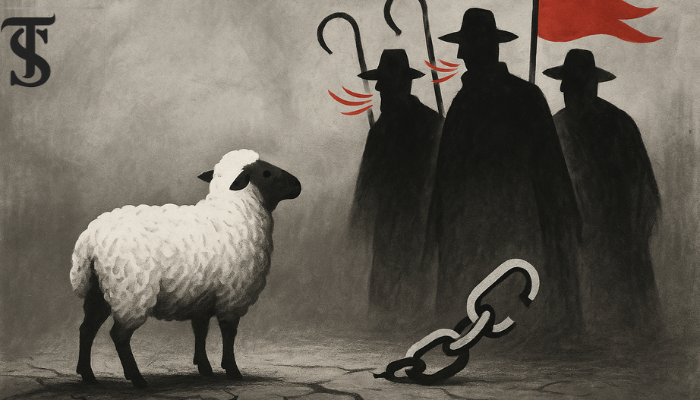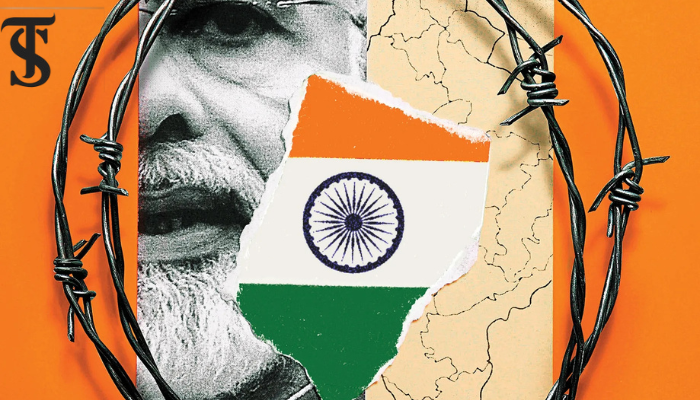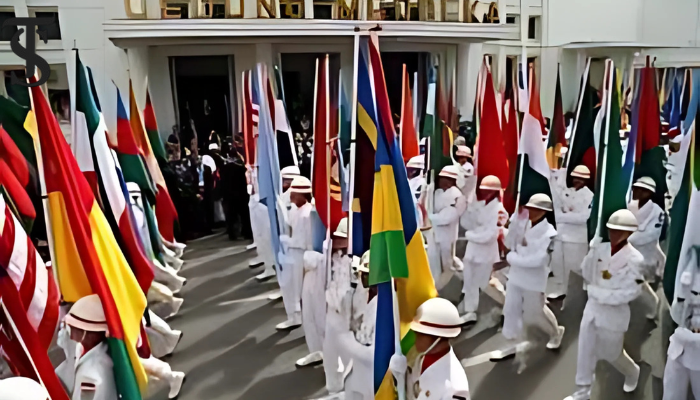The Evolution of World Order: From Empires to Multipolarity

- Historical Shifts in Power: The world order has evolved from ancient empires to modern multipolarity, with dominant states rising and falling through conquest, diplomacy, and economic influence.
- Emerging Multipolar System: The global landscape is transitioning towards a multipolar order, with nations like China, India, and Russia challenging U.S. dominance, alongside regional organizations gaining influence.
- Impact of Technological Advancements: Technological innovations, including AI, cyber warfare, and digital platforms, are reshaping global power dynamics and governance structures, creating new opportunities and challenges.
The concept of world order refers to the overarching system of power distribution among nations and the structure of international relations. It defines the relationships between states, economic hierarchies, political alliances, and cultural influences shaping global interactions. Throughout history, dominant states and civilizations have played crucial roles in establishing world orders through conquest, diplomacy, and economic influence. However, history demonstrates that no single power remains unchallenged indefinitely.
The rise and fall of great empires such as Rome, the Ottoman Empire, and the British Empire illustrate the constant shifts in global power dynamics. The modern world order, characterized by international institutions and regulations, has evolved from these past experiences. Yet, the contemporary international landscape is transforming, moving towards a multipolar world with diverse power centers.
The earliest forms of global order were established by empires that exerted centralized control over vast territories. Ancient civilizations such as Mesopotamia, Egypt, and Persia created hierarchical systems maintained through military conquest and economic strength. These early world orders were often based on religious or philosophical justifications that legitimized the rulers’ authority. The Persian Empire, for instance, managed vast and diverse territory through a well-organized administrative system, ensuring stability for centuries. However, internal instability and external invasions often led to their decline, making room for new powers.
The Treaty of Westphalia (1648) marked a major turning point in world order. By establishing the concept of sovereign nation states, it emphasized territorial integrity and non-interference in domestic affairs. This laid the foundation for modern international relations by recognizing national borders and legitimizing the role of diplomacy. Over the following centuries, European colonial powers extended their influence across Asia, Africa, and Latin America. While these colonial empires drove technological advancements and global trade networks, they also sowed the seeds for nationalist movements that eventually led to the collapse of imperial rule.
The 20th century witnessed profound shifts in world order, driven by two World Wars and the emergence of new global power centers. The devastation caused by World War I (1914–1918) resulted in the dismantling of major empires, including the Austro-Hungarian, Ottoman, and Russian Empires. The League of Nations was established in 1920 as an attempt to create a more stable global system based on collective security and diplomacy. However, its failure to prevent World War II (1939–1945) exposed its limitations, leading to the formation of the United Nations (UN) in 1945.
The post-World War II period was defined by a bipolar world order with two superpowers—the United States and the Soviet Union—dominating global affairs. This period, known as the Cold War (1947–1991), was characterized by ideological rivalry between capitalism and communism. Although direct conflict between the superpowers was avoided, proxy wars, nuclear arms races, and intense diplomatic maneuvering defined the era. Despite its conflicts, the Cold War also fueled advancements in science, technology, and international cooperation.
With the collapse of the Soviet Union in 1991, the world transitioned into a unipolar order, dominated by the United States. Washington promoted globalization, free-market capitalism, and liberal democracy as the cornerstones of a new international system. The rise of international institutions such as the World Trade Organization (WTO), the International Monetary Fund (IMF), and the European Union (EU) symbolized a move towards a rules-based global order. However, this U.S.-led dominance was short-lived as emerging powers began challenging Western supremacy.
Today, the world is moving towards a multipolar system, where multiple nations hold significant global influence. This shift is driven by economic realignments, geopolitical rivalries, and technological advancements. China’s rapid economic growth and global initiatives such as the Belt and Road Initiative (BRI) position it as a key competitor to U.S. dominance. India, with its expanding economy and strategic partnerships, has also emerged as a major power. Russia has reasserted its influence through military interventions (e.g., Ukraine) and energy diplomacy. Meanwhile, regional blocs such as the European Union (EU), the African Union (AU), and ASEAN play crucial roles in shaping global governance.
In addition to traditional state actors, non-state actors such as multinational corporations, transnational NGOs, and cyber groups have gained unprecedented influence over global affairs. Digital platforms have amplified transnational movements, facilitated the spread of misinformation, and complicated governance structures. Social media in particular has played a major role in shaping public discourse and mobilizing political movements across borders.
Technological advancements have always been key drivers of change in global order. The Industrial Revolution of the 19th century enabled European powers to dominate global trade and establish vast colonial empires. Similarly, today’s technological revolution—driven by artificial intelligence (AI), renewable energy, and biotechnology—is redistributing power in unprecedented ways. Cyberwarfare has replaced traditional military conflicts, AI-driven innovation is transforming industries, and global interconnectivity has created new economic dependencies.
The COVID-19 pandemic exposed the fragility of global supply chains and revealed the limitations of global institutions in crisis management. It highlighted the necessity of resilient economies and technological self-sufficiency, prompting many nations to re-evaluate their dependence on external supply chains. The pandemic also accelerated digitalization, making cyberspace a crucial battleground for geopolitical competition.
As the world transitions to a multipolar order, international institutions like the United Nations face difficulties in maintaining global stability. The fragmentation of power has made consensus-building more challenging, particularly on pressing issues like climate change, nuclear proliferation, and global health crises. Rising nationalism and populism in several countries have led to a retreat from multilateralism, weakening efforts for international cooperation.
Despite these challenges, multipolarity also offers opportunities. A more diverse global order can promote inclusive decision-making and reduce overreliance on a single superpower. Regional organizations and coalitions have the potential to address localized challenges more effectively. Additionally, technological innovation and economic interdependence can foster new forms of global collaboration beyond traditional political alliances.
The evolution of world order continues, shaped by historical legacies and emerging trends. While multipolarity presents opportunities for inclusive decision-making, it also carries the risk of intensified rivalries and geopolitical instability. The key to navigating this uncertain future lies in balancing competition with cooperation. Strengthening international institutions, fostering innovation, and addressing shared concerns—such as climate change, global health, and economic inequality—will be essential in shaping a more stable and prosperous world.
History has shown that no world order is permanent. However, every transition brings both challenges and possibilities for a better future. As global power dynamics continue to shift, states and international actors must adapt to the evolving landscape, ensuring that diplomacy, collaboration, and sustainable policies remain at the forefront of global governance.





